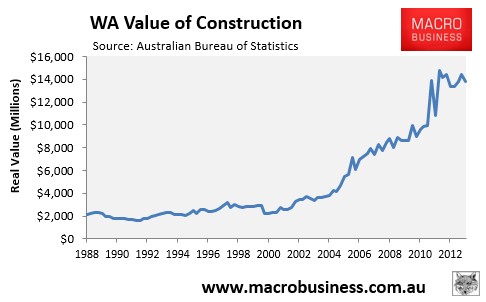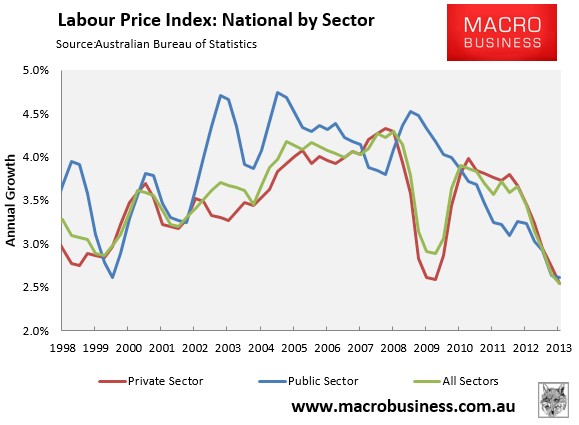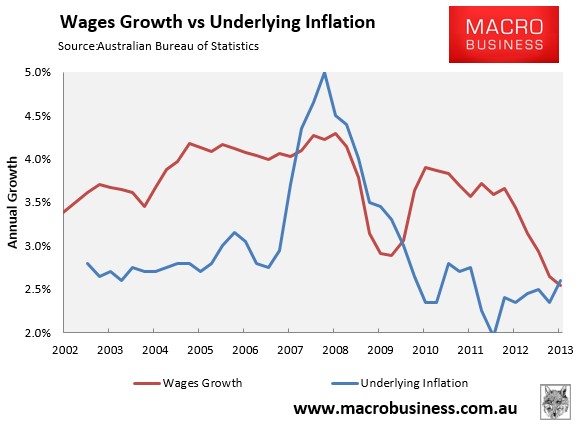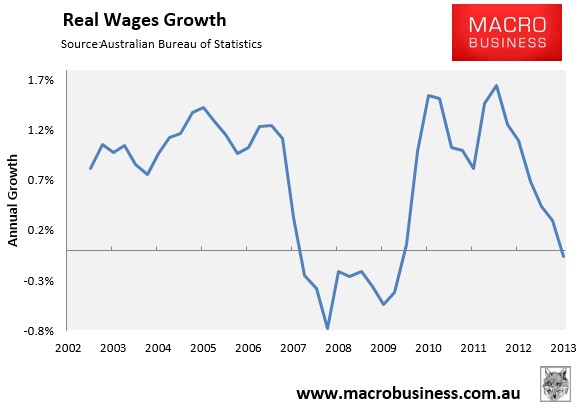
The AFR is reporting today that Western Australia’s construction workers are facing a significant correction to wages and conditions as the once-in-a-century mining investment boom unwinds, with a new enterprise bargaining agreement from the CFMEU agreeing to reduce labour costs for employers by up to 20%:
Wages and conditions rocketed in WA during the iron ore boom, as record mining project investment created a shortage in construction staff for both the resources and building sectors…
CFMEU WA state secretary Mick Buchan said in a statement that he recognised there needed to be a “structural adjustment” due to the contraction of major construction work…
Chamber of Commerce and Industry WA chief executive Deidre Willmott said CFMEU-negotiated wages and conditions were still too high… “They still need to be more realistic”…“Where wages have gone up unrealistically, they will need to come down.”
The real value of construction in Western Australia roughly quadrupled in the decade to December 2013 (see next chart), which handed construction workers immense bargaining power to raise their labour costs.

However, with the mining investment boom soon to begin what is likely to be a decade long unwind, Western Australian construction workers are facing a sharp slowdown, and potentially large labour surpluses.
Viewed in this light, the CFMEU’s concessions are entirely reasonable.
To a lesser extent, similar forces appear to be playing-out across the broader economy. The most recent labour price figures from the ABS revealed that Australian wages growth slowed to the slowest pace on record (1997) in the December quarter, clocking in at only 2.6% (s.a.) and 2.5% (trend):

When adjusted for underlying inflation, Australian wages actually fell in the year to December – the first decline in real wages since the Global Financial Crisis (see below charts).


The unpleasant reality is that the Australia’s economy has lost competitiveness, as evident by the raft of manufacturing closures (e.g. Ford, Holden, Electrolux, etc). In the absence of productivity growth, there are two ways for competitiveness to be restored:
- via a devaluation of the exchange rate, which raises the cost of imports and reduces the real purchasing power of Australian incomes; and/or
- wage rises below the rate of inflation.
It is also true that the ongoing decline of the commodity prices and the terms-of-trade will drag on national income growth, pulling down wages in the process.
In short, real wages will need to continue falling for Australia to regain its competitiveness (although labour costs are by no means the only factor). Without such an adjustment, firms will continue to shutter, slashing employment.

